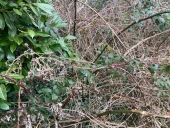
 2
2









 2
2




Visit Redhawk's soil series: https://permies.com/wiki/redhawk-soil
How permies.com works: https://permies.com/wiki/34193/permies-works-links-threads








Jay Angler wrote:Have you considered researching the benefits of deciduous trees in a mixed forest with respect to wild-fire safety? One of the reasons (apart from a shortage of beavers) that some of the BC interior fires have been so bad in the last couple of decades was the shift in forests to only evergreen.
Jay Angler wrote:As to housing, permies has done lots of research regarding "wofati" building.




In my area - further north than you - we have something locally called "Cottonwood", although I think that common name refers to more than one species across North America, and my neighbor would agree with your approach. They're a short-lived tree that prepares the land for more longer-lived successors, and they rot so easily that my neighbor's learned that they should be felled as soon as showing signs of rot just for safety's sake. This is very different from the cedar trees which can stand dead easily for decades and not be near the threat. But as you also noted, once dried, they make fine firewood.Currently the trees in question are 40-50 ft high, some look to be over 100ft (just guessing). They are all in various stages of rotting from the inside out, so are quite dangerous.
There are lots of resources that will say that spending time on the land before making big decisions like building type and location is a good thing, so long as you stay sufficiently warm this winter. Hopefully you'll get a feel for where the big storms hit, where the water flows, which areas flood and how to keep you and your food dry. Many people look at the temperatures in the Pacific North West and think that hypothermia isn't a risk, but if one gets wet, can't get dry, and there's a breeze as well, the risk is quite real. The nice thing about building small is that it won't take a lot of wood to get it warm. Have you looked at the Rocket Mass heater forum? There are some that are designed as a bed platform, which would be good for keeping bedding dry. I'm living in a stick built house with lousy thermal mass and I notice a big difference when I visit my sister whose much older home was built with concrete block walls, but no insulation. In many ways, her house is the more comfortable house to relax in, as the temperature is more steady.Unfortunately, I will most likely not be ready to build until spring (there's a lot of excavation to do and it's all by hand), which means the new shelter will be finished by the beginning of summer, so any winter testing will have to wait for next year.
Visit Redhawk's soil series: https://permies.com/wiki/redhawk-soil
How permies.com works: https://permies.com/wiki/34193/permies-works-links-threads




“All good things are wild, and free.” Henry David Thoreau




A human being should be able to change a diaper, plan an invasion, butcher a hog, conn a ship, design a building, write a sonnet, balance accounts, build a wall, set a bone, comfort the dying, take orders, give orders, cooperate, act alone, solve equations, analyze a new problem, pitch manure, program a computer, cook a tasty meal, fight efficiently, die gallantly. Specialization is for insects.
-Robert A. Heinlein




Chris Kott wrote: I would be cautious about getting rid of the cottonwood....or tethered half-log planters that will float....I would also consider whether there are any local types of willow that would be advantageous to you....I know of species of cypress and cedar that will grow at the water's edge, leaning out over it for years as they grow....




Artie Scott wrote:Welcome aboard, Isaac! Beautiful spot, and love your idea of a floating garden. No sun? Anchors aweigh! Better still, no need for fencing out the critters. Although, might be interesting to find out if anything would swim out to it - raccoon? Bear?
 2
2








Visit Redhawk's soil series: https://permies.com/wiki/redhawk-soil
How permies.com works: https://permies.com/wiki/34193/permies-works-links-threads
 1
1




Jay Angler wrote:Thanks for the update, Isaac! Yes - trees have a habit of changing plans for people in my neighborhood also!
I agree that in really wet areas, airflow is an important tool for keeping the mold away. It's a bit hard to form a picture from your description, so I'd love to see pictures as you make progress on the re-building.














Have you considered using them for a chinampas-style garden out from the shore. It would keep deer from munching stuff, but you may feel there are other water based munchers that would think you'd built it for them?There are four or five concrete floats under the larger dock that I have no need for.
Visit Redhawk's soil series: https://permies.com/wiki/redhawk-soil
How permies.com works: https://permies.com/wiki/34193/permies-works-links-threads




 1
1




Lorinne Anderson: Specializing in sick, injured, orphaned and problem wildlife for over 20 years.








Lorinne Anderson: Specializing in sick, injured, orphaned and problem wildlife for over 20 years.




 1
1




Lorinne Anderson wrote: log "fence" made from floating logs around your docks and gardens might lessen trespasser issues, along with "cougar den on property"
 1
1












Visit Redhawk's soil series: https://permies.com/wiki/redhawk-soil
How permies.com works: https://permies.com/wiki/34193/permies-works-links-threads
 1
1








 3
3




Jeremy Baker wrote:Are there a lot of red alder trees on the land? Otters come and go from my experience living near water a few times. Ive read they fish out a place and move along.
Ive read several places that rats like to hide and nest in ivy so they are taking it out in a lot of places.

|
Skool. Stay in. Smartness. Tiny ad:
The new permaculture playing cards kickstarter is now live!
https://www.kickstarter.com/projects/paulwheaton/garden-cards
|




